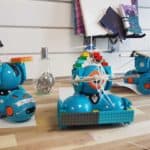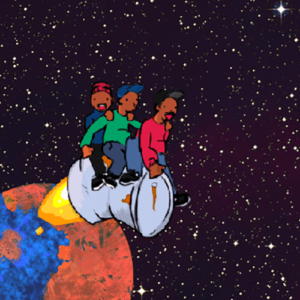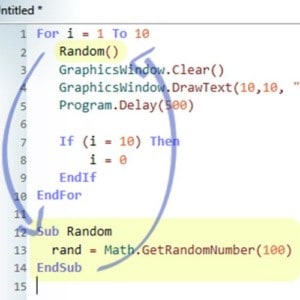Section Navigation
Introduction
When programming it’s important to understand how each programming block will direct the robot move. Students will learn how to visualize a solution to a programming challenge and then program the robot accordingly.
Learning Goals
By the end of this module students will be introduced to how programming blocks control the robot. This will help students visualize what they need the robot to do and then how to program it. This relates to procedural writing and how to visualize the overall goal before and during a task.
Vocabulary
X coordinate - is the left and right movement
Y coordinate - is the forward and backward movement
Guiding Questions
- Do you ever try to visualize what you need to do before you do it?
- Do you think this is a helpful practice? Why?
Curriculum Links
This module is connected to the Math and Computer Studies curriculum. Students will be using distances to program Dash to move where they program it to. They can measure these distances using rulers and program the movements in centimeters. It can also be tied to the x and y coordinates since movements can be described in the x and y directions. This module also connects to Language Arts curriculum as students should be able to orally describe their movements. They can also describe their movements in a written format if you complete the Language conclusion activity that involves writing a story.
Materials
- Dash Robot – Learn More
- Blockly App – Download Blockly
- Bowling pins or empty water bottles
- Whiteboard or chalkboard
- Paper and pencils
- Tape
Non-Computer Activity
Draw a simple maze on the whiteboard. Have the group describe the steps required to successfully make it through the maze. Write the steps suggested on the board. Encourage students to use language similar to programming language (forward one space, 90 degree left turn…). Once the group is satisfied with their directions follow the steps and see if they were successful. If they did not make it through the maze let them make adjustments to their steps and try again.
The goal is to pre plan the steps that are needed before performing them. This will help the participants visualize what they need to program and practice their procedural writing skills. In the next part of the module students will be programming their robots to knock over bowling pins. They will need to visualize what they want their robot to do and practice before trying to knock over the most pins.
Computer Activity
Students will bowl using the Dash robot. They will program their Dash robot, in pairs, to go through the grid and knock over as many pins as possible. There is one catch! Students only get one try and need to pre-program the directions before starting! This helps students look at a problem and try to visualize the solution.
Set Up
Tape a 6×6 or larger grid on the floor. Set pins at random intersections on the grid (if you do not have a plastic bowling set empty plastic water bottles or something similar can be used).
Allow students time to play around with Dash and get comfortable programming it. They can practice on the grid and figure out how to go specific distances. The idea is that they will pre-program the movements for Dash to knock over the pins by hitting play when they are done. Encourage students to measure the distance they want to have Dash cover in a single movement since it can be programmed to move specific distances.
Some Tips
- Have students start at the same position every time
- Set the pins up in the same position every time
- This activity works best when there are other activities for students to do while they wait or if you set up multiple “bowling alleys”
Coding Instructions
Once in the Blockly app coding blocks can be added from the menu found on the left side of the screen. Start by clearing the blocks on the screen (other than the start block) by dragging them to the bottom right corner of the screen.
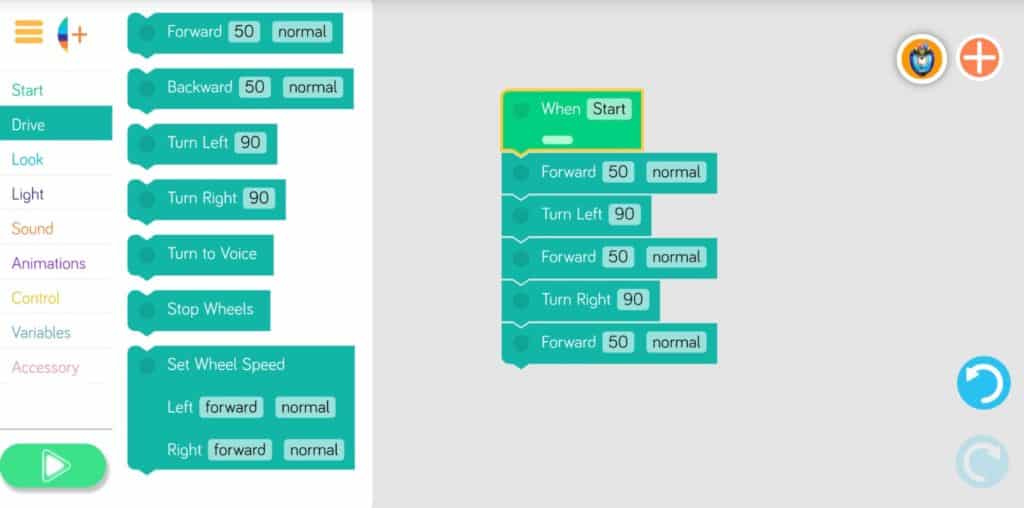
The tab labelled ‘Drive’ is where all the movement blocks can be found. The control tab is where wait blocks and repeat loops can be found. Be sure to give students time to play around with the blocks and figure out how they work on their own.

The speed and distance that the robot is moving with each drive block can be adjusted. Students should play around with the speeds and the distance and see how the accuracy changes as the speed increases. This might be a factor when they are programming the robot to knock over the bowling pins.
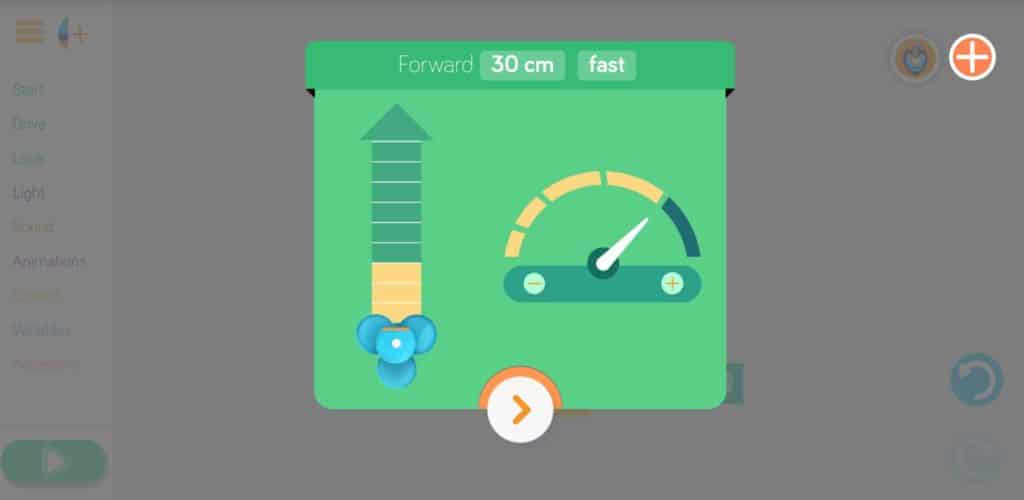
Let the pairs take turns knocking down the pins. Try to give each group equal chances. Record how many pins each pair knocks over to see which group can knock over the most. Keep track on the whiteboard so students can see how they are doing in comparison to the other groups.
Conclusion
To better connect to the language curriculum have students write a story that includes basic movements (turning left, going straight, stopping to talk to someone…). After the students are done writing their story have them program the Dash robot to complete the movements that they included in their story. They could even use props found around the classroom to help improve the visual representation of their story.
If you would prefer to connect to math curriculum have students write out the path they took for bowling using x and y movements (for example, moved in the x direction two spaces then moved in the y direction one space). To test their skills at writing the movements have them turn their backs and call out the movements that the robot should be moving to see how accurate they were.
Resources
Additional Resources
- Code.org has great resources that tie into specific concepts such as algorithms and functions.
- Wonder Workshop has curriculum resources for kindergarten to Grade 8 that can be downloaded.
Social Media Resources
- @WonderWorkshop on Twitter (account for the Wonder app)
